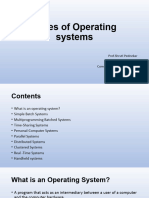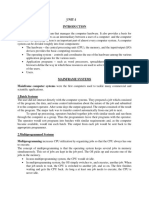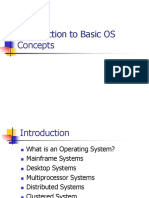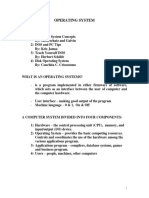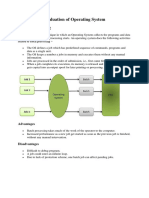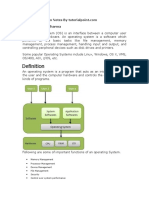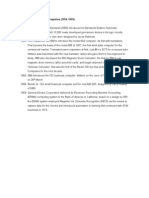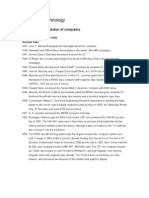0% found this document useful (0 votes)
76 views1 pageNetwork Operating System
A network operating system (NOS) is software that controls a network, its message traffic and queues. It provides basic support for hardware ports as well as security, directory services, file/print sharing, remote access, system management and network administration tools. A NOS allows for client/server architecture, fault tolerance and high availability. Cooperative multitasking relies on tasks giving up the processor, while pre-emptive multitasking allows an scheduler to interrupt tasks. Multithreading shares a single CPU between threads to minimize switching time by sharing execution environments.
Uploaded by
weezer90Copyright
© Attribution Non-Commercial (BY-NC)
We take content rights seriously. If you suspect this is your content, claim it here.
Available Formats
Download as DOC, PDF, TXT or read online on Scribd
0% found this document useful (0 votes)
76 views1 pageNetwork Operating System
A network operating system (NOS) is software that controls a network, its message traffic and queues. It provides basic support for hardware ports as well as security, directory services, file/print sharing, remote access, system management and network administration tools. A NOS allows for client/server architecture, fault tolerance and high availability. Cooperative multitasking relies on tasks giving up the processor, while pre-emptive multitasking allows an scheduler to interrupt tasks. Multithreading shares a single CPU between threads to minimize switching time by sharing execution environments.
Uploaded by
weezer90Copyright
© Attribution Non-Commercial (BY-NC)
We take content rights seriously. If you suspect this is your content, claim it here.
Available Formats
Download as DOC, PDF, TXT or read online on Scribd
/ 1



